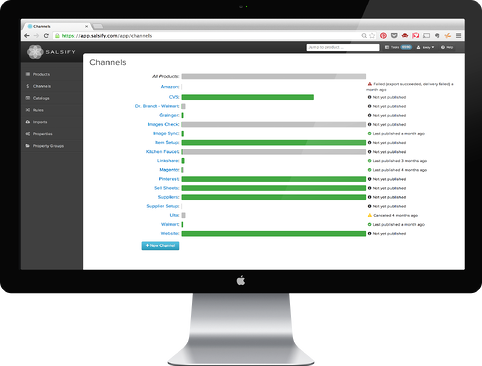Properly optimizing product feeds is, without a doubt, a primary factor in any Google shopping campaign. Every ad must include several attributes, but being relevant to the user’s needs and search query terms are, arguably, the most important. The question then becomes, what steps can be used to garner the most attention from customers?
1. Optimize Your Product Titles for Search
Although potential customers have the option of using several search engines, Google is the first choice for most consumers. The data is unquestionable—Google is the top choice regardless of the product category. That means it pays to optimize the product title for Google’s algorithms.
Industry experts virtually all agree that the language used in product feeds must be closely related to the verbiage potential customers use when entering a search engine query. If your language is too formal or based on industry jargon rather than customer-friendly terms, it’s unlikely your site will rank highly during a search.
One of the best ways to identify the types of language customers are likely to use during a search is to go to reviews of similar products and pay close attention to the terms used by consumers in those reviews. Those are the words best used for optimizing product titles and descriptions.
2. Include Robust, Retailer-Compliant Product Descriptions
Google and the other search engines rank sites based on specific criteria that’s usually readily available. In most cases, the words early in the product description are more important than those later in the listing. Start out with strong wording that’s most relevant to shoppers.
If you’re unsure of the wording to use, check successful competitors to see how their titles are worded. It’s also important to keep abreast of tools like Google Trends and Google Correlate to determine what information customers are currently searching for.
Keywords are critical, and they must be carefully researched prior to determining the final wording of product descriptions. Keyword searches provide the most commonly used terms, but may also contain synonyms that might actually work better for some product or service providers.
3. Test Product Attributes to Monitor Their Impact on CTR
Because the behavior of searchers is constantly evolving, it’s important to not only look at prior data to construct how product attributes are described and displayed but to also test the use of attributes in real time to determine their viability.
Tested elements should include the title length and keyword placement. As a rule, longer titles are now demonstrating higher success rates than shorter ones. However, it’s possible for even a shorter title using optimized verbiage to obtain great results.
Test the returns over time using different content to determine which attributes garner the best returns. If it’s not possible to run side-by-side comparisons, run one test for a pre-determined period of time and then run a second test immediately after the first testing period. Waiting too long between tests will tend to distort the results, as consumer behavior and other factors can change quickly.
4. Add Product Content/Attributes for Richer Listings
It’s important to include content that’s geared closely to the needs of customers, but those needs are always changing. The net result is that content and attributes should be flexible to meet any evolving consumer behavior trends.
In most cases, marketers must constantly monitor trends to determine what significance they have for a specific product or service. Even seasonal variations should be considered, with verbiage changing to reflect the current needs.
5. Resolve Differences Between Search Engine and Consumer Needs
In the majority of cases, the algorithms employed by Google and the other search engines accurately reflect the needs and demands of consumers using the search engine, but there may be times when what appear to be solid keyword choices aren’t finding favor with Google.
In the event rankings appear to suffer due to specific keyword choices, a little research can generally uncover alternative keywords to bridge the gap between perceived consumer needs and those of the search engine. Again, testing and tracking results will define what needs to be changed to balance the needs of customers and Google.
Optimizing product feeds is as much an art as it is a science, and there is no single solution to meet every site’s marketing needs. That’s why it’s vitally important to be willing to explore new ideas and change titles and descriptions as needed to achieve or maintain rankings on search engines and, now, social media sites as well. By staying on top of current trends, taking to time to conduct routine testing, and monitoring results, site owners will find they’re reaching more of the customers they need to attract.
Written by: Salsify
Salsify drives results for customers worldwide, empowering them to win on the digital shelf.
Recent Posts
10 Brand Examples of Click-Driving Product Images, Videos, and More To Inspire
Summit Spotlight: Salsify Leaders Share How To Advance to the Next Decade of the Digital Shelf
Omnichannel Strategy: Here Are the Top 3 Drivers of Omnichannel Profitability
Subscribe to the Below the Fold Newsletter
Standing out on the digital shelf starts with access to the latest industry content. Subscribe to Below the Fold, our monthly content newsletter, and join other commerce leaders.


